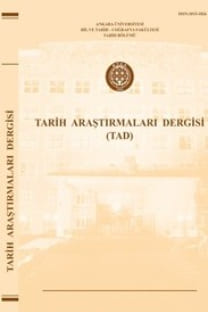Osmanlı İranı I: Batı İran ve Azerbaycan Tarihi Hakkında Osmanlı Tahrîr Kayıtları: Coğrafî ve İdarî Taksimat
Safevî devletinin Afgan istilâsı neticesinde büyük bir kaosa düşmesi, Osmanlı devleti için İran üzerinde yeni fütuhat yollarının açılmasına imkân yaratmıştır. Osmanlı fetihleri neticesinde Revân, Nahcevân, Tebriz, Erdebîl, Merâga, Kirmânşâh, Hurrem-âbâd, Nihâvend ve Hemedân kısa sürede Osmanlı devletine bağlanmıştır. Bu bölgelerin nüfûs tahrîrinin yapılması için emirler verilmiştir. Emirler doğrultusunda yapılan tahrîratın önemli bir kısmı günümüze ulaşmıştır ki, bu makalede tanıtım ve değerlendirmeye tabi tutulacak olan kayıtlar da bu tahrîrâtı kapsamaktadır. Defterler; Erdebîl, Makû, Tebriz, Hoy, Kapan, Kara-Tag, Merâga, Soğuk (Sovuk) Bulak, Erdelân, Kirmânşâhân, Lûristân ve Hemedân sancak ve eyâletlerinin mufassal tapu tahrîr kayıtlarını ihtiva etmektedir. XVIII. yüzyılda İran resmî kayıtlarının yetersiz kaldığı birdöneme ait olan bu defterler, iktisadî ve sosyal olduğu kadar, etnik, dinî ve mezhebi tarih araştırmaları için de önemli bilgiler içermektedir. Defterlerde, Azerbaycan ve Güneybatı İran'daki yaklaşık 10.000 yerleşim yeri ve coğrafi bölge ile yüzlerce kabile ve aşiretin adı zikredilmiştir. Bu isimler, tarihî topografya, İran tarihî coğrafyasının tanınması ve yer isimlerinin tarihî tekâmülü açısından son derece kıymetlidir.
Ottoman Iran I: Ottoman ' Tahrîr' Records Concerning the History of Western Iran and Adharbaijan: Geographical and Administrative Divisions
Shortly after the Safavid state had fallen into chaos as a consequence of the Afghan invasion, its capital Isfahan was taken by Ashraf Khan: this created an opportunity for the Ottoman state to take control of Adharbaijan and 'Iraq-e Ajam. Advancing on three fronts, the Ottomans conquered Ravän, Nakhjavan, Tabriz, Ardabll, Marägha, Kirmänshäh, Khurram-äbäd, Nihävand and Ramadan. According to custom, they gave orders that a census should be made of the population of these districts. In this article I deal with the surviving tahrîr records made as a consequence of these orders. These documents (daftar-i khâqânï) include detailed (mufassal) records for the districts and provinces of Ardabîl, Makü, Tabriz, Khüy, Qapän, Qara-Tägh, Marägha, Soghuq (Sovuq) Buläq, Ardalän, Kirmänshähän, Lorestän and Hamadän. The records in question provide as much valuable information for researchers dealing with ethnic and religious questions as they do for the social and economic historian. The records refer to almost 10.000 settlements and geographical regions by name, and to hundreds of clans and nomadic groups ('aşiret-'aşa'ir-aimaq) inhabiting them. These names are invaluable for an understanding of the historical topography and geography of Western Iran, and the place-names also give us significant insights into the historical development of the area. The tens of thousands of personal names which are found in these records also provide vital clues to the culture and beliefs of the period. In addition these records will be valuable to those working on the charitable foundations and hospices (waqf-zäviya) of Western Iran.
___
- ISSN: 1015-1826
- Yayın Aralığı: Yılda 2 Sayı
- Başlangıç: 1963
- Yayıncı: Levent KAYAPINAR
Sayıdaki Diğer Makaleler
MARINO SANUDO TORSELLO, BİzANS VE TÜRKLER: 1332-1334 TÜRKLERE KARŞI İTTİFAKlN PERDEARKASI*
Klasik Dönemde Osmanlı Devletinin İstihbarat Stratejileri
XVII. Yüzyılda Bir Osmanlı Paşasının Masraf Bilançosu
İlk Atina Deniz Birliğinde Tributum/Harç Miktarı ve Vatandaş Sayısı
E. RUSCHENBUSCH, Ayşe Gül AKALIN
XVII. Yüzyıl Sefer Menzillerinin Ekonomik Yönü ve Esnafın Katkısı
HİTİT KRALLIGI'NDA VELİAHDIN BELİRLENMESİ ÜZERİNE
Tanzimat Öncesinde Girne Kazası (Temettuat Defterlerine Göre)
